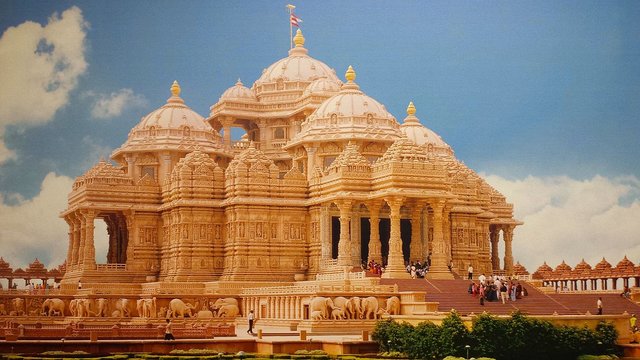the indian temple building history
Kinds of stone design
There are two kinds of stone design:
Shake cut. Shake cut engineering is made via cutting into characteristic shake. Typically cut into the sides of mountain edges, rockcut structures are made by uncovering rock until the ideal structures are accomplished.
Stone manufactured. The focal point of this manual, stone-fabricated design, then again, includes collecting slice stone pieces to shape an entirety.
Buddhism gets this show on the road

[image source] [{https://www.google.com/url?sa=i&source=images&cd=&cad=rja&uact=8&ved=2ahUKEwjw6IyyqcjhAhULrI8KHYEfBS0QjRx6BAgBEAU&url=https%3A%2F%2Fen.wikipedia.org%2Fwiki%2FAkshardham_(Delhi)&psig=AOvVaw33ymOcdOU90SCoAjf7C5Tq&ust=1555081772456709}]
The primary stone design in India was shake cut and executed by Buddhist priests; preceding these structures, the sum total of what engineering had been made of wood. The most great precedents were shake cut religious havens, uncovered straightforwardly out of the basalt mountains coating the western edge of the Deccan Plateau, the raised, angular landmass that includes the greater part of the Indian promontory. The caverns at Ajanta - just as those at close-by Bedsa, Bhaja, Karla, Kondane, Nashik, and Pitalkhora - were a piece of this underlying rush of unearthings.
Motivation for India's shake design
Early Buddhist design was likely in a roundabout way motivated by that of the Egyptians. The Egyptians were most likely the primary human advancement on the planet to build stone design; they started with stone-manufactured pyramids in the 27th century BCE (Djoser's Step Pyramid in Saqqara) and proceeded with shake cut tombs in the sixteenth century BCE (Valley of the Kings in Luxor).
In the meantime, comparative stone-assembled pyramids, called ziggurats, were being constructed not very far away in Mesopotamia (cutting edge Iran and Iraq); the most punctual likely date from the late piece of Sumeria's Early Dynastic period (2900-2350 BCE). The ziggurat pyramid plan, in any case, was never changed from ventured to smooth edged, similar to the case in Egypt.
Egyptian and Mesopotamian structures and building rehearses were obtained by the Persians, who grasped shake cut design. Truth be told, the imperial tombs of Darius (522 BCE to 486 BCE) and the remainder of the Old Persian (Achaemenid) Empire were shake cut; they are found only outside of the old city of Persepolis in advanced Iran. Doubtlessly drawing on Persian point of reference, India's most punctual stone draftsmen initiated constructing rock-cut design in the third second hundreds of years BCE. These modelers adjusted Persian structures - implanting them with neighborhood plan inclinations got from their current wood-based design and acquainting altogether new highlights with suit their novel religious practices - to make shake caverns with a completely new tasteful.
For what reason were the Buddhists the first to work in stone?
It gives the idea that the Buddhists coincidentally had the help of rulers and rich dealers amid the basic time frame in which Persian shake slice compositional practices started to stream into the subcontinent. Remember, in spite of the fact that the Buddhist confidence was established in India in the sixth century BCE, it didn't increase broad selection until it got magnificent sponsorship by the ground-breaking Mauryan Emperor, Ashoka, who changed over to Buddhism and administered a large portion of the Indian subcontinent from 269-232 BCE. The confidence gathered ensuing force as a rising vendor class were pulled in to Buddhism.